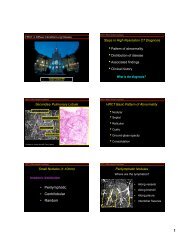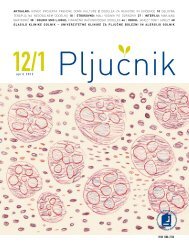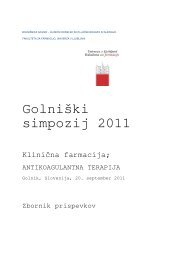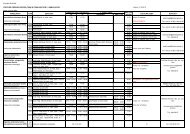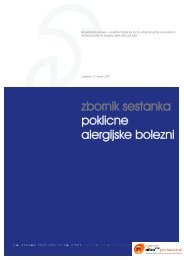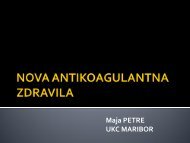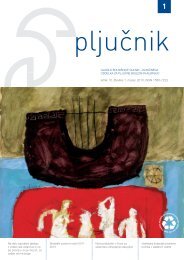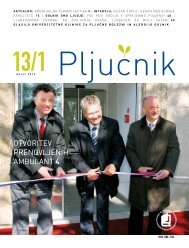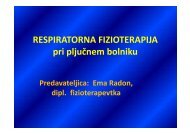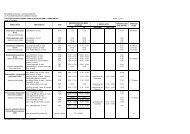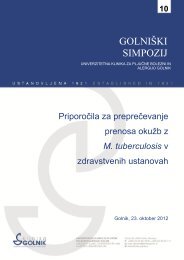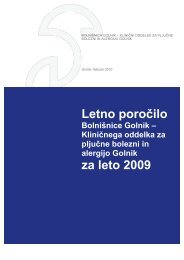Golniški simpozij 2011 Zbornik povzetkov
Golniški simpozij 2011 Zbornik povzetkov
Golniški simpozij 2011 Zbornik povzetkov
You also want an ePaper? Increase the reach of your titles
YUMPU automatically turns print PDFs into web optimized ePapers that Google loves.
Methicillin-resistant Staphylococcus<br />
aureus and extended-spectrum b-<br />
lactamase producing<br />
Enterobacteriaceae in house pets<br />
Katja Øinkovec 1 , Dane Luænik 2 , Zlata Œop 3 , Viktorija Tomiœ 2<br />
1<br />
Department of Microbiology, Faculty for Biotechnology, University of Ljubljana<br />
2<br />
University Clinic of Respiratory and Allergic Diseases, Golnik<br />
3<br />
Veterinary Clinic, Lesce<br />
Background<br />
Resistant bacteria are a major public health concern. Methicillin-resistant Staphylococcus aureus<br />
(MRSA) is a major pathogen in human medicine and has become a recognized problem in farm animals<br />
(e.g. pigs). Pet owners as well as veterinary doctors and assistants can be colonized with<br />
MRSA and/or with entended-spectrum b-lactamase producing Enterobacteriaceae (ESBL-E) and<br />
they could transfer the pathogens to their pets through direct contact. We wanted to determine the<br />
carriage rate of both pathogens in house pets attending a busy veterinary clinic in Lesce (NW Slovenia).<br />
Methods<br />
A survey was conducted prospectively from February 1 to May 1, <strong>2011</strong> Veterinary Clinic Lesce.<br />
House pets, mainly cats and dogs were screened for carriage of ESBL-E and MRSA on a visit to the<br />
clinic. To assess carriage of MRSA nose and rectal swabs and for carriage of ESBL-E only rectal<br />
swabs were collected. All swabs were inoculated into brain-heart infusion broth. After 24 h of incubation,<br />
broths were subcultured onto BBL CHROMagar MRSA (BD, USA) and Brilliance ESBL agar<br />
(Oxoid, UK). Suspected colonies of MRSA and ESBL-E were identified by standard laboratory procedures.<br />
Results<br />
Screening samples were collected from 100 house pets, 42 cats (42%), 57 dogs (57%) and 1 guinea<br />
pig. Also nasal screening swabs for MRSA detection were collected from 6 veterinary workers (2 veterinary<br />
doctors and 4 assistants). We detected only 1 cat colonized with ESBL-E and no house pets<br />
colonized with MRSA. All screened employees of the veterinary clinic were free of MRSA.<br />
Conclusions<br />
Carriage of resistant bacteria in screened group of house pets was minimal. Since resistant bacteria<br />
can be easily transferred from owners to pets and vice versa periodic surveillance would seem<br />
reasonable.<br />
44



